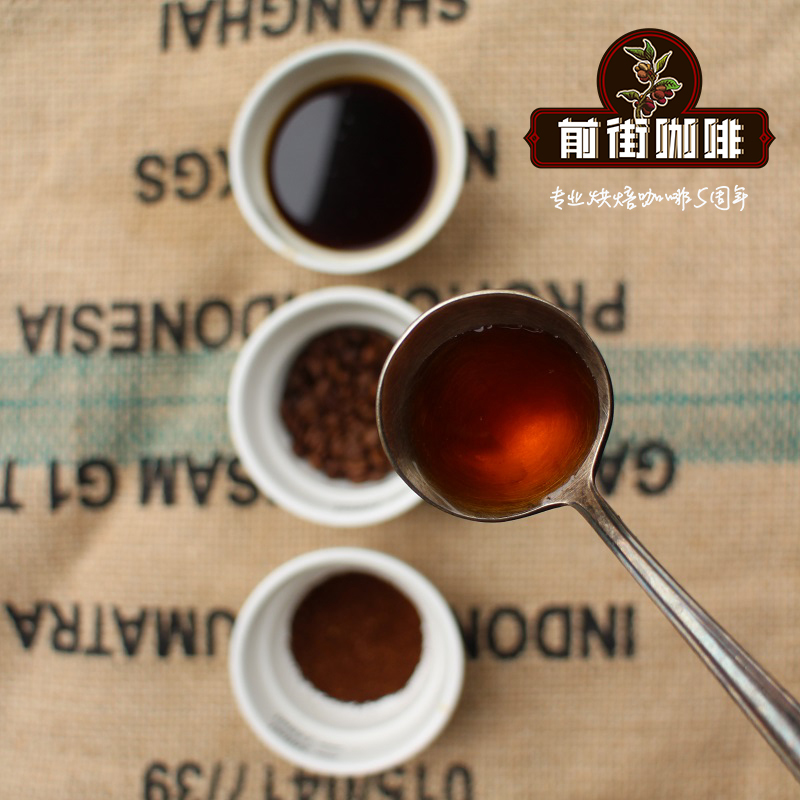Coffee varieties | Why Columbia Coffee Research Center attaches so much importance to hybrid coffee varieties

As far as coffee producers are concerned, F1 hybrids tend to be high-quality, rust-proof and high-yielding varieties-the golden trio. However, there is only one problem: their procurement is extremely difficult and expensive.
However, the Starmaya variety can provide a solution. It is still in the final stages of testing, but this F1 has proved to solve many problems in the coffee industry: rust, coffee shortages and so on.
I contacted William Solano, an expert on genetic resources and agrobiodiversity at the Costa Rican Centre for Tropical Agricultural Research and higher Education (CATIE) to learn all about Starmaya and why it is so important.
Why do we need new varieties?
The coffee industry currently faces many challenges: leaf rust is affecting crops that were previously resistant to rust, and climate change is reducing the amount of land available in Arabica and allowing pests to multiply at higher altitude. consume more coffee than the amount of coffee grown each year.
New varieties won't solve all these problems, but they can help alleviate some of them.
Solano told me that researchers are looking for two main attributes of new coffee varieties. The first is higher resistance to disease, especially for coffee growing between 800 and 1400 degrees Celsius, especially for the devastating coffee leaf rust. More importantly, it is at these low to medium heights that caffeine rust and pests grow.
The second attribute is excellent cup quality, especially when planted on farms at higher elevations (for example, from 1400 to 2000 Ma)
Another important factor is output. Producers want their crops to be highly productive to ensure a bumper harvest; this will also help to correct the supply and demand problems in the industry.
Researchers have been working on these characteristics for a long time, but until the emergence of F1 hybrids, they were trying to produce all three varieties satisfactorily.
F1 HYBRIDS: what are they?
F1 is a relatively new mixed coffee variety. They breed in large numbers in advanced nurseries and are usually more diverse than wild varieties of coffee.
See also: coffee varieties: what are F1 mixed coffee varieties and why are they good news?
Solano told me that to create these hybrids, CATIE and World Coffee Research (WCR) conducted a wild material analysis of coffee to select potential rust-resistant parents (e.g. Costa Rica 95) or high-quality parents (such as Art or ET47). Parents were selected from these two groups and hybridized in order to create varieties with high quality, high yield and disease resistance.
F1 hybrids have proved their worth: the Central American team won the 2017 Nicaragua Excellence Cup with 90.5 points. At the time, WCR CEO Tim Schilling announced: "this confirms our intuition that F1 hybrids are essential for the future of coffee." F1 hybrids can combine the characteristics that are most important to farmers (higher yield and disease resistance) with those that are most important to consumers (taste). In the past, this has always been a tradeoff. Coffee is a big step forward in the future. "
And Solano told me that because of the high quality and unique cup shape of these varieties, he saw the audience of these varieties, especially in the booming East Asian market.
However, despite the promise, F1 hybrids also pose a major challenge to us: distribution. Because of their high acquisition costs, their availability is limited to the wealthiest producers.
The challenge of obtaining F1 hybrids
The greatest difficulty faced by producers is to obtain seeds. Most F1 varieties can only be cloned. There is no guarantee that their seeds will produce plants with the same characteristics. According to WCR, cloning "can cost twice as much as plants that reproduce seeds."
Moreover, their availability is limited. "the number of plants that the farm really needs has not yet been produced in the laboratory," Solano said. " This is contrary to most traditional varieties, which can be purchased in nurseries or grown from producers' current crops.
However, Starmaya may provide the answer to this question.
Why is F1 coffee so expensive?
It's time to be a little more scientific: the problem with most F1 hybrids is that both female and male plants produce pollen, including male gametes or germ cells. Therefore, coffee cherries may be the result of mother-child hybridization (required combination), but it may also be the result of mother-child hybridization or father-child hybridization (unwanted combination).
This means that choosing a cherry as a seed is a bit like nailing a tail to a donkey: you may or may not succeed, and you won't be sure whether you have it or not until you take off your blindfold and get your first harvest.
In order to produce F1 hybrids that can be propagated by seeds, researchers need to find a sterile parent who cannot produce pollen. This does not mean that it cannot reproduce or grow flowers and cherries, but that it cannot pollinate other plants.
For example, in a field full of fertile female and sterile male plants, any coffee cherry on the male plant must be crossed between the mother and the father. Their seeds can be collected and grown in nurseries or by producers.
STARMAYA: diversity in the future?
In 2001, researchers from CIRAD, a French agricultural research center, collaborated with ECOM Agroindustrial to discover a male sterile Arabica plant at the CATIE Bank in Costa Rica. This is a promising discovery.
But future research is still a long way off. The breeders first hybridized it with the rust-proof Masai Lesha, and then conducted field tests in Nicaragua. After seeing positive results, ECOM named the new variety Starmaya and began testing it in farmers' fields this year. It still cannot be distributed outside the test, but if the test goes well, the producer will be able to get it.
As WCR said, "Starmaya represents a major breakthrough in coffee breeding, suggesting that the main constraints to the widespread use of F1 hybrids by farmers around the world may soon disappear."
Starmaya offers everything: high-score cups, high yield, rust-resistant and reasonably priced seeds. As brown rust continues to flourish and the ICO reports for the third year in a row that demand exceeds supply, this is encouraging news for producers, roasters and consumers.
Important Notice :
前街咖啡 FrontStreet Coffee has moved to new addredd:
FrontStreet Coffee Address: 315,Donghua East Road,GuangZhou
Tel:020 38364473
- Prev

Coffee varieties | the rise of hybrid coffee varieties what kind of coffee is F1?
Before introducing mixed coffee, let's briefly introduce the types and types of coffee. There are 125 kinds of coffee. But almost all coffee served in coffee shops or sold in supermarkets is Arabica coffee, robusta coffee or a mixture of both. Arabica coffee is the most common species, famous for its high-quality flavor and aroma, but it is also the most susceptible
- Next

What is the difference between fine coffee and commercial coffee? what are the standards of fine coffee? what are the characteristics?
What makes boutique coffee so special? We know its quality is much better than commercial grade beans, but why? It was picked from the tree. Is the tree full of the unique and delicious features we like? If only it were that easy! The production of high-quality micro-batch boutique coffee requires a lot of detailed work. From fertilizer to shadows, from
Related
- Detailed explanation of Jadeite planting Land in Panamanian Jadeite Manor introduction to the grading system of Jadeite competitive bidding, Red bid, Green bid and Rose Summer
- Story of Coffee planting in Brenka region of Costa Rica Stonehenge Manor anaerobic heavy honey treatment of flavor mouth
- What's on the barrel of Blue Mountain Coffee beans?
- Can American coffee also pull flowers? How to use hot American style to pull out a good-looking pattern?
- Can you make a cold extract with coffee beans? What is the right proportion for cold-extracted coffee formula?
- Indonesian PWN Gold Mandrine Coffee Origin Features Flavor How to Chong? Mandolin coffee is American.
- A brief introduction to the flavor characteristics of Brazilian yellow bourbon coffee beans
- What is the effect of different water quality on the flavor of cold-extracted coffee? What kind of water is best for brewing coffee?
- Why do you think of Rose Summer whenever you mention Panamanian coffee?
- Introduction to the characteristics of authentic blue mountain coffee bean producing areas? What is the CIB Coffee Authority in Jamaica?

